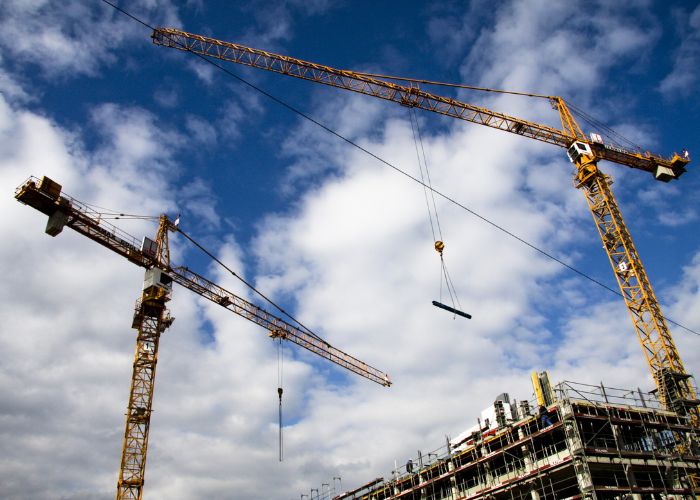BARCELONA – The real estate sector in Catalonia claims that fewer homes are still being built in the region than needed. Even though construction cranes can be seen everywhere.
At the end of the third quarter of 2022, construction of 11,503 homes had started by November. According to the Association of Property Developers in Catalonia (APCE), that number is still far from the 25,000 that is needed to meet accumulated demand after so many years of under activity.
Falls far short of the number of properties needed
The number of houses that have started construction has increased by 10.5% compared to the first three quarters of 2021. This is according to the study on the supply of new homes in Catalonia that APCE presented last week. However, it is still far from the 25,000 homes the area would need according to the organisation’s calculations. The prognosis is to close the year with about 14,000 to 15,000 homes started. That means the deficit will remain above 10,000.
Logically, the province of Barcelona leads the real estate boom of the past year, with 8,846 homes started, (+11%). The growth is mainly to be found in the metropolitan area of the Catalan capital. Still, led by Mayor Ada Colau, the city sees activity fall by 16.6%. “Barcelona is indeed a very consolidated city, but the rules to allocate 30% of developments to subsidised housing do not help. Furthermore, the granting of permits takes forever,” explained Xavier Vilajoana, president of APCE in ElEconomista.es.
Meanwhile, activity in Girona fell by 18%, from 1,514 homes to 1,241; it grew by 43.7% in Lleida, from 398 to 572 and rises by 43.3% in Tarragona, from 589 to 844.
Inflation is not yet a factor
Inflation at the price level does not seem to have reached the sector yet, according to the project developers. The average cost of a home was €368,809, 2% less than in 2021. The decrease was mainly in Barcelona (-5.6%), while it increased in Girona (+16.9%), Lleida (+7 .5%) and Tarragona (+14.5%).
According to Vilajoana, that’s because many of the developments that started in 2022 were already on the market before cost increases skyrocketed. “In the past year, the price of a job has increased between 17% and 23%. Moreover, materials such as steel have become much more expensive, in addition to the 4% wage increases. Looking at 2023, they expect increases between 2% and 3%.
Public housing
Social housing has been the main bone of contention between the sector and the Barcelona City Council. In 2018, the municipality approved a rule that requires projects of more than 600 square metres to reserve 30% for social housing (VPO). However, the rule was heavily criticised by the promoters.
The law has resulted in only 52 subsidised homes being put on the market in the city in the past four years. This is evident from the data that the APCE has made public via the transparency portal. “Governments should assess whether, over the years that the ordinance aimed at increasing the number of subsidized housing in the city, has achieved its objectives,” said Vilajoana.
1,138 subsidised homes were built throughout Catalonia. This equates to one social home in ten homes sold on the open market. That is far from the 30% that Ada Colau had set as a target in its regulations.


